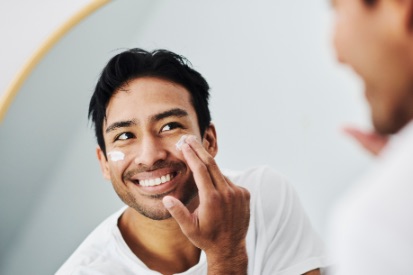The Ultimate Guide to Proper Sunscreen Application: Dermatologist-Approved Tips and Techniques
Sunscreen Is Always A Good Idea
 No matter what time of year it is, sunscreen is always a good idea. However, it is especially important during the summer months when the UV rays are stronger and we spend more time outdoors.
No matter what time of year it is, sunscreen is always a good idea. However, it is especially important during the summer months when the UV rays are stronger and we spend more time outdoors. For many individuals, applying sunscreen is an afterthought and they only put it on when they feel as though their skin is “burning.” However, rain or shine, burn or no burn, sunscreen is essential for protecting your largest organ—the skin—and preventing dangerous skin cancer.
If you’re unsure of how to effectively apply sunscreen, we’re here to help. Read our guide on when to apply it, how much sunscreen you should wear, how often to reapply, and more.
When To Apply Sunscreen
It’s always best to apply sunscreen before you go outside and into the sun’s harmful rays. According to the American Academy of Dermatology, it takes around 15 to 30 minutes for sunscreen to sink in and protect your skin.
If you head out too early and don’t apply sunscreen right away, you pose the risk of getting burnt and doing irreversible damage to your skin.
How To Apply Sunscreen
To adequately protect your skin, you need to use enough sunscreen. Though this varies from person to person, the general recommendation is one ounce of sunscreen—enough to fill a shot glass—to cover your entire body. If you’re larger and taller, you may need a bit more for optimal coverage.
For your face, we recommend about a teaspoon of sunscreen and avoid getting sunscreen into your eyes.
Before applying, make sure to vigorously shake the sunscreen bottle to ensure the particles are properly mixed together. Then, apply thickly and thoroughly to the parts of your body that are exposed to the sun.
Additionally, make sure it is rubbed in thoroughly and don’t miss applying the sunscreen to often forgotten areas like the neck, ears, feet, back of the knees, and hands.
How Often To Reapply Sunscreen
Reapplying regularly throughout the day is key to staying optimally protected from harmful UV rays. In many cases, people who have been sunburned didn’t use enough sunscreen or did not reapply often enough to provide adequate coverage.
If you’ve been swimming or strenuously exercising, reapply immediately afterwards. If you work outdoors, reapply every two hours or so and make sure to wear a wide-brimmed hat and protective clothing.
How To Choose The Right Sunscreen
There are a few key characteristics to look for when choosing the right sunscreen for you. Here are our recommendations:
- 30 SPF or higher
- Water-resistant sunscreen
- Broad-spectrum coverage
Additionally, you have two sunscreen types to choose from: physical or chemical. Generally, physical sunscreens are better for those for sensitive skin, as the chemical ingredients in chemical sunscreens may cause irritation.
However, physical sunscreens may give the skin a white cast, as they do not blend in as well as chemical sunscreens.
Additionally, while both sunscreen types are often water-resistant, chemical sunscreens are typically more effective than physical sunscreens at staying on the skin in water. Nonetheless, both are exceptional options. Make sure to choose one you can wear comfortably on a daily basis.

Finding The Right Sunscreen For You
If you need help choosing the right sunscreen for your skin type, consult with a Cumberland Skin provider. Our experienced team can recommend a sunscreen that is right for you!
Featured Sunscreens

Revision Intellishade Clear Broad-Spectrum SPF 50
Correct, protect, brighten, and hydrate skin with this 4-in-1 daily age-defying untinted moisturizer with Broad-Spectrum SPF 50. Intellishade® Clear provides immediate and long-term hydration to the skin, reduces the appearance of fine lines and wrinkles, visibly brightens and evens skin tone, protects the skin from broad-spectrum UVA/UVB radiation, and reduces free radical damage from environmental stressors for healthy, beautiful skin. 1.7 oz / 48 g

ZO® Sunscreen + Primer Broad-Spectrum SPF 30
This dual-action sunscreen, with ZOX12® complex, protects against the damaging effects from UVA/UVB and IR-A rays, and from HEV light. Hydrates and doubles as a makeup primer for a smooth matte finish, diminishing skin imperfections.

Visit Our Online Store
Already know what sunscreen you love? Check out our online store to purchase all your favorite medical-grade skincare products.
Related Blog Posts

- Skin Cancer
- Sun Safety
Summer safety is more than just putting on sunscreen; many other factors to consider when keeping yourself and your children safe from damage and potential skin cancer.

- Skin Cancer
- Skin Exams
It’s time to face the facts: skin cancer can develop in individuals of all skin colors, including those with darker skin tones.
Read More
- Skin Cancer
- Skin Exams
In this blog, we’re covering what you need to know about five dangerous skin cancers, including basal cell carcinoma (BCC), squamous cell carcinoma (SCC), malignant melanoma, merkel cell carcinoma, and kaposi sarcoma.
Read More


